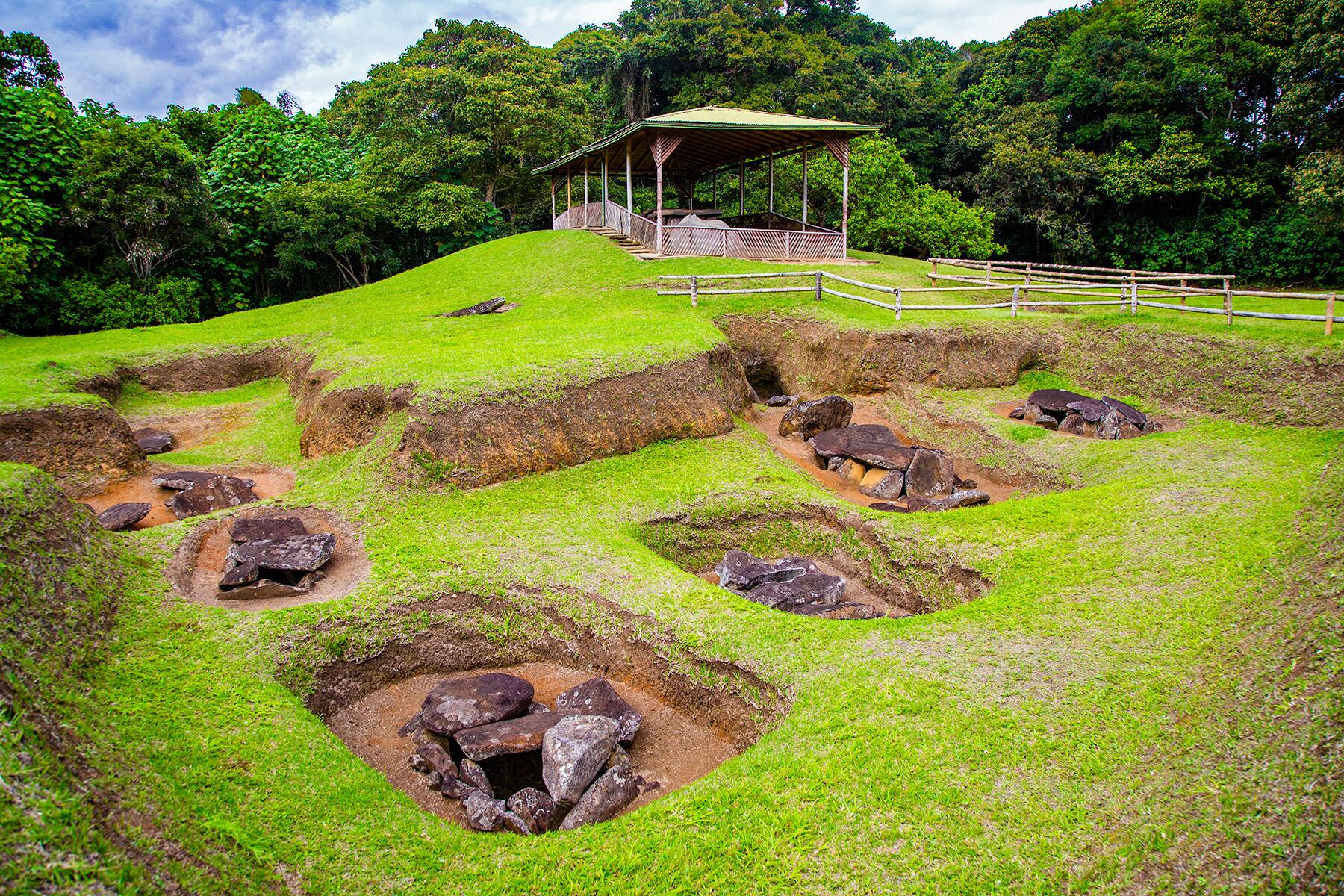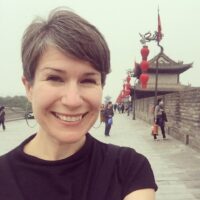The enigmatic Colombian archeological site has guarded its secrets for centuries. Now, the fight is on to make it whole again.
Deep in southwestern Colombia’s jungles, not far from the headwaters of the Magdalena River, the country’s cultural crown jewel stands as a stunning but incomplete testament to the mysterious people who lived here some three millennia before.
San Agustín Archeological Park is a UNESCO World Heritage Site unlike any other in South America. Instead of towering pyramids or city remnants seen in other parts of the continent, the park comprises 300 massive megaliths carved from volcanic rock. It’s believed they were used for royal burials centuries ago. However, much about the people who created them remains a mystery.
While the site’s exact origins might be lost to time, something else is also missing. A century ago, a German ethnologist took nearly three dozen of the area’s funerary stones, spiriting them off to a museum half a world away. Activists say their return is long overdue.
Unclear Origins and an Abrupt Disappearance
There’s scant information about the pre-Colombian civilization that first thrived near San Agustín three thousand years ago. Also unclear: exactly why they crafted the gorgeous pieces depicting gods, chiefs, and jungle animals between the 1st and 8th centuries BCE. The intricate slabs were likely sacred items used in burial rites and rituals—perhaps considered afterlife protectors—and laid over the graves of nobles, shamans, and chiefs.
Recommended Fodor’s Video

Testing proved they were once brightly painted, but much like China’s Terracotta Army, the pigments oxidized and faded after air exposure. Around 1350, the site was mysteriously abandoned, and its citizens scattered, leaving their treasures behind and underground.
Over time, erosion and earthquakes began to resurface portions of the site. When the area was rediscovered by Spanish colonizers in the 18th century, looters arrived looking for gold. Scientists eventually followed to survey, study, and inventory the site.
A Post-WWI Plunder
Among those researchers was Konrad Theodor Preuss. Sponsored by the Ethnological Museum of Berlin, Preuss arrived in Colombia in 1913. He eventually traveled through much of the country, taking archaeological artifacts as he went. He also spent much time excavating in and around San Agustín.
In 1919, when World War I ended, Preuss could finally return to Germany. He didn’t go home empty-handed. During the next several years, hundreds of Indigenous objects were shipped back to the Berlin museum, including 35 stones he removed from San Agustín and nearby Nariño. They were largely forgotten for decades. That changed when an American-born expat tracked down those missing artifacts and began working alongside his new neighbors to demand their return.
‘I Knew Exactly What I Was Looking For’
David Dellenback, now a U.S.-Colombian citizen, has lived on the outskirts of San Agustín since the 1970s. He’s always been intrigued by the area’s funerary stones. “I found them fascinating,” he explains.
As Dellenbach’s interest deepened, so too did his research and understanding of the site. He eventually created his own illustrated catalog of the statues. He also pored over a book written by Pruess and started to realize just how many of San Agustín’s treasures were back in Berlin.

“Pruess has been called ‘the honest thief’ because he published details of all the things he took,” says Dellenback. “I had his book for a long time, I had photocopies and excerpts with images of the statues I was hoping to find. I knew exactly what I was looking for.”
He decided to hunt for them himself. In 1992, Dellenback traveled to Berlin, toured the museum, got access to its storage rooms, and found the missing Colombian stones, some still wrapped.
“The people in charge there were very thankful,” says Dellenback. “Now they knew what they had.” And Dellenback now knew what he wanted returned to Colombia.
Growing Activism
Back at home, Dellenback built a coalition of the willing—locals in and around San Agustín–who wanted their cultural treasures back from Berlin. He contacted museum officials, Colombian government agencies, and gathered thousands of signatures from residents demanding the start of a repatriation process. The effort picked up some media attention but gained true traction in 2016, when Dellenbach and others filed an acción (action) popular in the Colombian courts, seeking to push the government to formally ask Germany to return the stones.

The following year, the Tribunal Superior de Cundinamarca ruled in the group’s favor, obliging several government entities to actively seek the return of the archaeological objects from Berlin.
“The way they were obtained was unethical, and no proper museum should want to exhibit them,” says Dellenback. But after the 2017 court ruling, progress stalled again. That changed when the left-leaning Gustavo Petro won the presidential election in 2022.
Renewed Calls for Repatriation
It quickly became clear to San Agustín activists that Petro’s administration heard their concerns and, more importantly, was beginning to act on them.
Negotiations took place between Colombian officials and administrators at the Humboldt Forum, which absorbed the Ethnological Museum of Berlin in 2020. In June 2023, the Humboldt handed over two Indigenous Kogi masks, which Preuss had taken more than a century before. President Petro traveled to Germany to accept them himself. Hopes are now running high that the San Agustín stones might be next to return.

“From my point of view, as an Idigenous Wiwa of the Sierra Nevada, the recovery of these artifacts is part of a new process for us,” says Eduardo Gil, owner of Wiwa Tour and general manager of the National Association of Indigenous Tourism in Colombia. “It’s a new beginning in the recovery of our symbolic identity. I believe at some point, the sacred stones of San Agustín will be returned to their origin. These artifacts should not remain in museums because, for us, they are part of our identity.”
But, the balance between appropriation and preservation is often delicate. The sculptures currently on display at the park are kept outdoors. While sheltered and surrounded by fencing, they remain vulnerable to the area’s punishing environmental factors. So, if not in a museum, where should the figures eventually end up if they come back to Colombia?
Dellenback would like to see the governments of Germany and Colombia right what he calls past wrongs and, in so doing, fund a new locally-led effort to reunite, house, and protect all the stones.
“San Agustín should have a voice regarding the destiny of its own archeology, as opposed to some government agency in Bogota making all the decisions,” says Dellenback. “We need to make sure the community is included in something that’s so important to us.”





